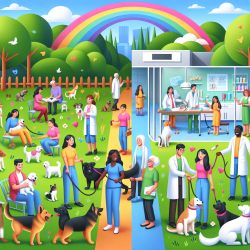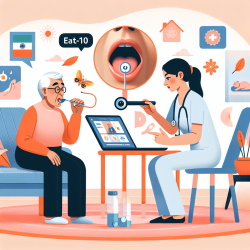Introduction
The relationship between veterinarians and canine therapy programs is an underexplored area that holds significant potential for mutual benefits. The research article "When Veterinarians Support Canine Therapy: Bidirectional Benefits for Clinics and Therapy Programs" provides a comprehensive model for collaboration between these two entities. By understanding and implementing the findings from this research, practitioners can enhance their skills and contribute to the growth and success of canine therapy programs.
The Bidirectional Benefits
Veterinarians routinely establish partnerships with various community stakeholders, including local dog rescue organizations, to ensure a steady stream of clients and community engagement. Similarly, a partnership with canine therapy programs can offer a multitude of benefits. For veterinarians, this collaboration can lead to increased client traffic, as therapy dog handlers are typically devoted pet owners who frequently visit clinics to ensure their dogs' optimal health. This partnership can also open doors to a network of dog enthusiasts who are high consumers of veterinary services.
Understanding Canine-Assisted Therapy
Canine-assisted therapy has gained popularity, with therapy dogs being incorporated into various settings such as schools, courtrooms, airports, and college campuses. The demand for therapy dogs reflects the public's desire for both purposeful and ambient interactions with canines. However, finding well-qualified volunteer handlers and therapy dogs can be challenging. This is where veterinarians can play a crucial role by informally assessing potential dog-handler teams during clinic visits.
Complementary Needs
Both veterinarians and canine therapy programs face the challenge of maintaining and replenishing their client base. While veterinary clinics need to generate new clients due to the relatively short lifespan of animal clients, therapy programs need to replace dogs and handlers who retire or move away. A collaborative model where veterinarians recommend suitable dog-handler teams for therapy programs can address these needs effectively.
Volunteer Handlers as Ideal Clients
Therapy dog handlers are often highly committed to their dogs, making them ideal clients for veterinary clinics. They invest time and energy to ensure their dogs are prepared for therapeutic work, which translates to frequent clinic visits. Moreover, these handlers are typically active in their local dog community, providing veterinarians with access to a network of dog enthusiasts who are potential clients.
Veterinarians and Community Responsibility
Engaging with local canine therapy programs allows veterinarians to fulfill their community responsibility by contributing to public education and community engagement. By recommending well-qualified dog-handler teams, veterinarians can enhance the quality of therapy programs and indirectly improve the well-being of clients served by these programs.
The Clinic Visit as an Assessment Opportunity
Clinic visits provide an excellent opportunity for veterinarians to informally assess the suitability of dog-handler teams for therapy programs. Observing the handler's ability to manage the dog in a public setting and the dog's temperament can offer valuable insights into their potential success in therapy work. Veterinarians can then suggest participation in therapy programs, enhancing the likelihood of client follow-through.
Conclusion
Establishing a partnership between veterinarians and canine therapy programs offers a mutually beneficial model that can address the needs of both parties. By implementing the findings from the research, practitioners can enhance their skills and contribute to the success of therapy programs. To read the original research paper, please follow this link: When Veterinarians Support Canine Therapy: Bidirectional Benefits for Clinics and Therapy Programs.










